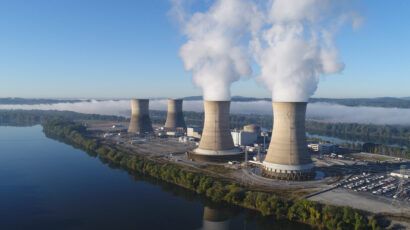Avenston. 2023. “History of solar energy prices: How did solar become so cheap?” May 22. Avenston LLC. https://avenston.com/en/articles/pv-cost-history/
Baranzini, A., Carattini, S., and Peclat, M. 2017. “What drives social contagion in the adoption of solar photovoltaic technology.” GRI Working Papers 270, Grantham Research Institute on Climate Change and the Environment. https://ideas.repec.org/p/lsg/lsgwps/wp270.html
Burgen, S. 2024. “ ‘If a million Germans have them, there must be something in it’: How balcony solar is taking off.” December 18. The Guardian. https://www.theguardian.com/environment/2024/dec/18/if-a-million-germans-have-them-there-must-be-something-in-it-how-balcony-solar-is-taking-off
Eker, S., Lenton, T. M., Powell, T., Scheffran, J., Smith, S. R., Swamy, D., and Zimm, C. 2024. “Cross-system interactions for positive tipping cascades.” June 19. Earth System Dynamics. 15, 789–800. https://doi.org/10.5194/esd-15-789-2024
Evans, S. 2020. “Solar is now ‘cheapest electricity in history,’ confirms IEA.” October 13. Carbon Brief. https://www.carbonbrief.org/solar-is-now-cheapest-electricity-in-history-confirms-iea/
Horton, H. 2024. “Labour lifts Tories’ ‘absurd’ ban on onshore windfarms.” July 8. The Guardian. https://www.theguardian.com/environment/article/2024/jul/08/labour-lifts-ban-onshore-windfarms-planning-policy
Intergovernmental Panel on Climate Change (IPCC). 2018. “Global warming of 1.5°C An IPCC special report on the impacts of global warming of 1.5°C above pre-industrial levels and related global greenhouse gas emission pathways, in the context of strengthening the global response to the threat of climate change, sustainable development, and efforts to eradicate poverty.” (V. Masson-Delmotte, P. Zhai, H.-O. Pörtner, D. Roberts, J. Skea, P.R. Shukla, A. Pirani, et al., Eds.. https://www.ipcc.ch/site/assets/uploads/sites/2/2019/05/SR15_Citation.pdf
International Energy Association (IEA). 2024. “Breakthrough Agenda Report 2024.” September. In collaboration with UN Climate Change High-Level Champions. https://www.iea.org/reports/breakthrough-agenda-report-2024
Mercure, J.F., Lam, A., Buxton, J., Boulton, C., and Lenton, T.M. “Evidence of a cascading positive tipping point towards electric vehicles.” Preprint. https://www.researchsquare.com/article/rs-3979270/v1
Nemet, G. F. (2019). How solar energy became cheap: A model for low-carbon innovation. Routledge. https://www.howsolargotcheap.com
Nijsse, F.J.M.M., Sharpe, S., Sahastrabuddhe, R., and Lenton, T.M. 2024. “A positive tipping cascade in power, transport and heating.” September. Global Tipping Points. https://global-tipping-points.org/wp-content/uploads/2024/09/A-positive-tipping-cascade-in-power-transport-and-heating_GTP-230924.pdf
Nijsse, F.J.M.M., Mercure, JF., Ameli, N. et al. 2023. “The momentum of the solar energy transition.” October 17. Nature Communications 14, 6542. https://doi.org/10.1038/s41467-023-41971-7
NREL (National Renewable Energy Laboratory). 2021. “Documenting a Decade of Cost Declines for PV Systems.” February 10. US Department of Energy. https://www.nrel.gov/news/program/2021/documenting-a-decade-of-cost-declines-for-pv-systems.html
Powell T., Smith, S.R., Zimm, C., and Bailey, E. 2023. “Positive tipping points in technology, economy and society.” Global Tipping Points Report 2023. University of Exeter. https://report-2023.global-tipping-points.org/section4/4-0-positive-tipping-points-in-technology-economy-and-society/
Roser, M. 2023. “Learning curves: What does it mean for a technology to follow Wright’s Law?” Our World in Data. https://ourworldindata.org/learning-curve



















